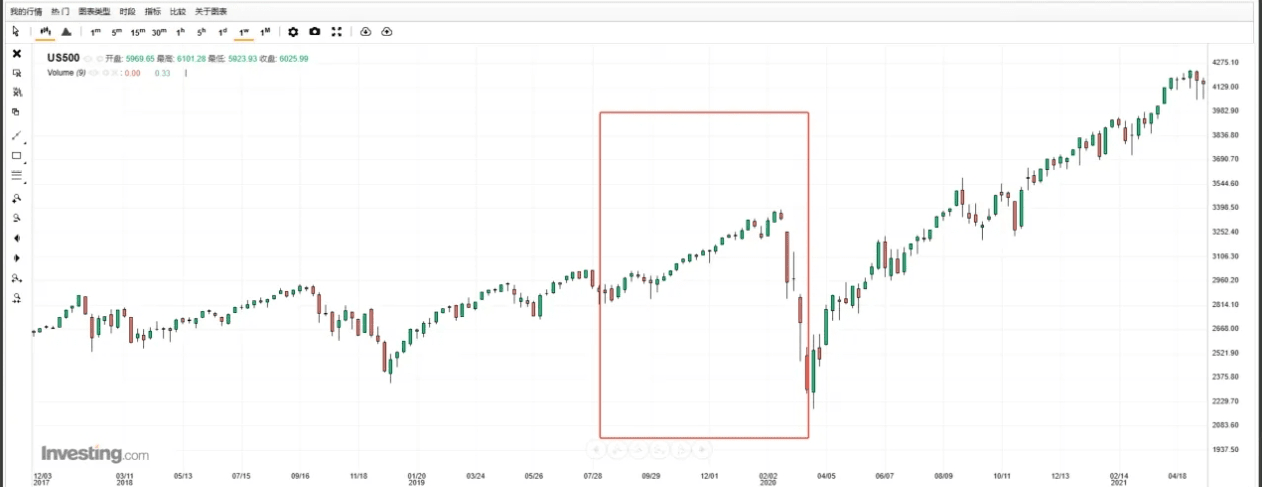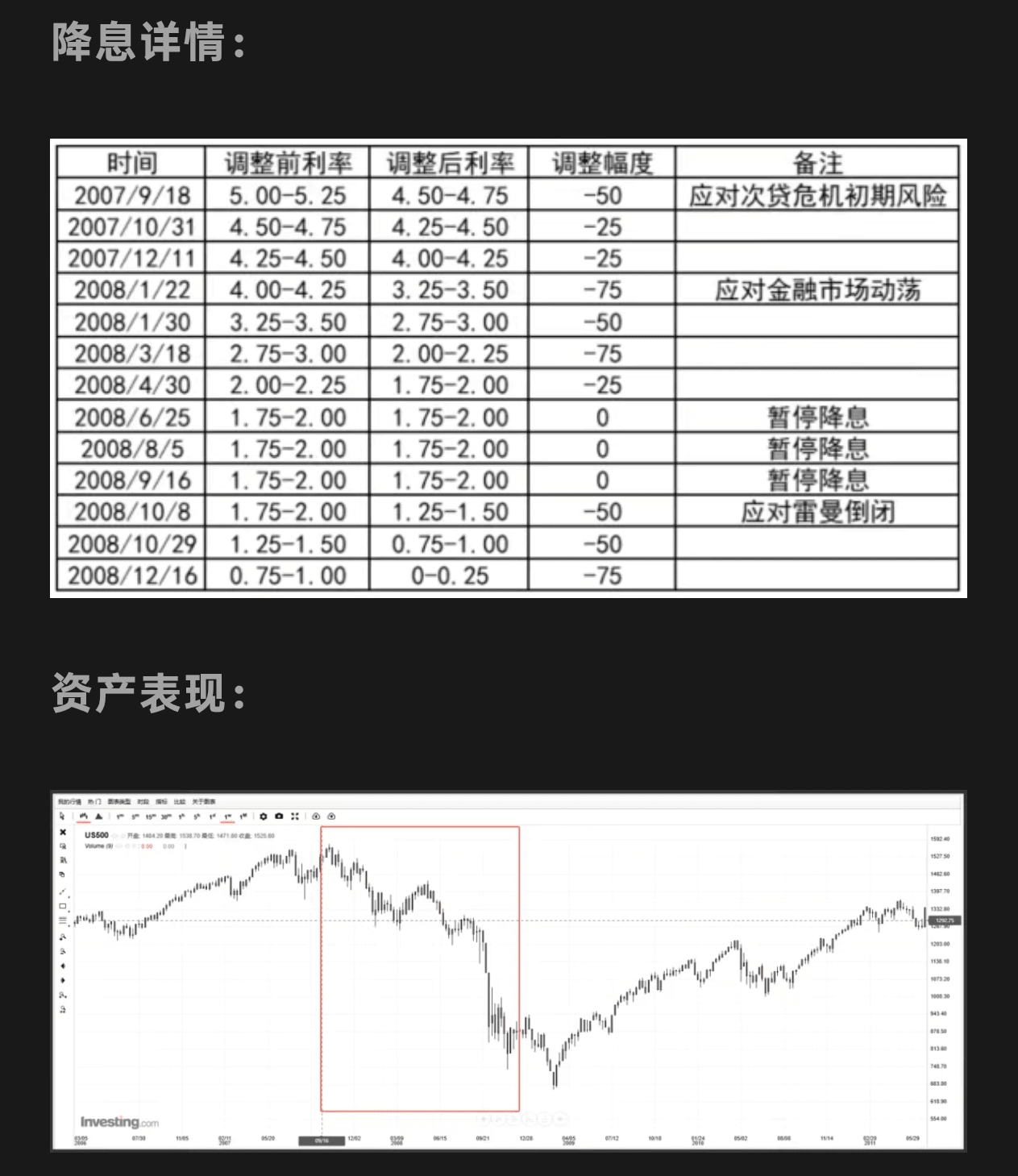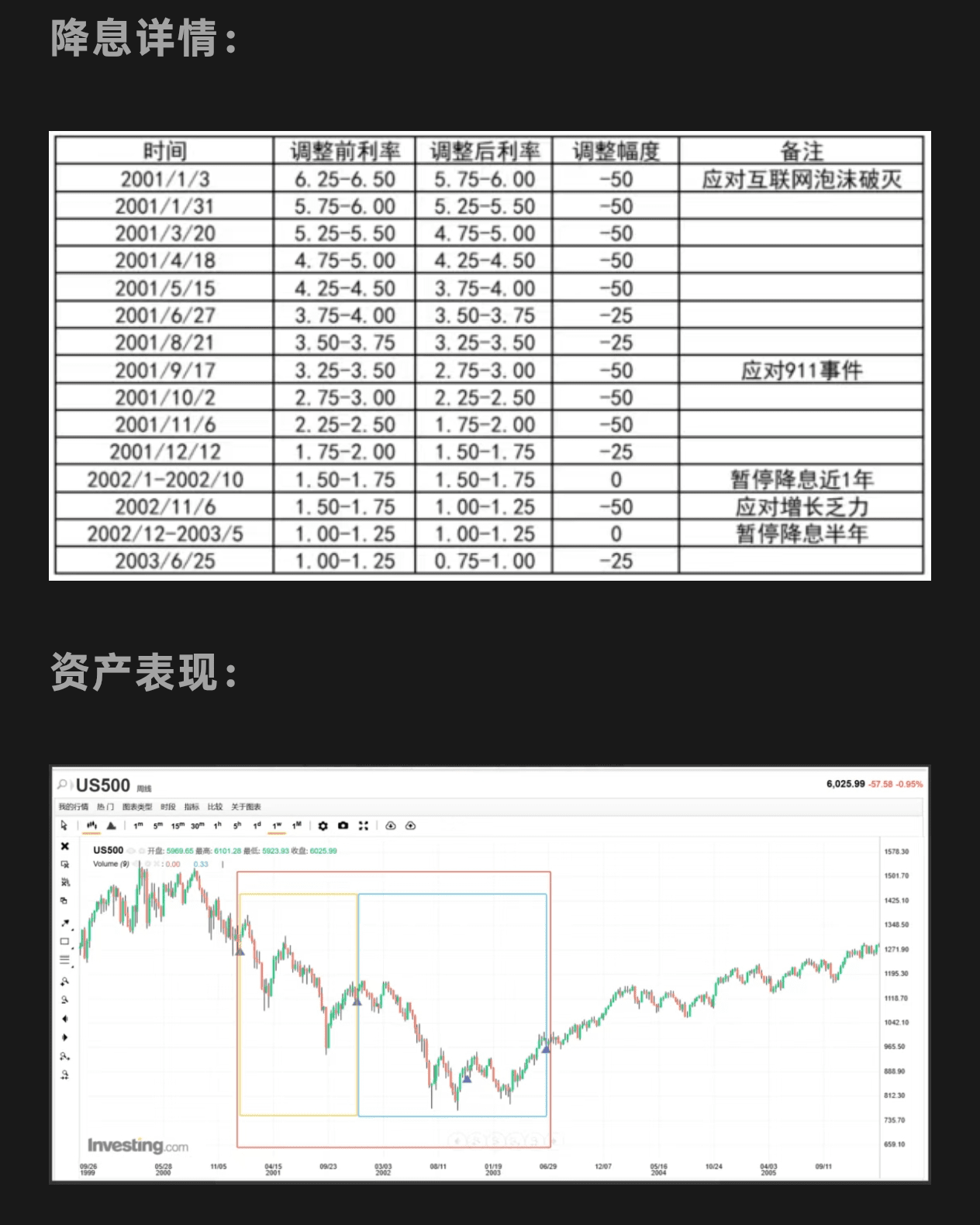What to do during the Fed's interest rate cut cycle
Let's use an analogy to help you understand the Fed's rate-cutting cycle. Let's compare the economy to the human body. A rate-cutting cycle is like a patient's treatment cycle. If you're sick, you should rest well and avoid rushing out for fun. In other words, avoid investing during a rate-cutting cycle. A "preventive rate cut" is like a patient showing early symptoms (signs of an economic recession), and the doctor (the Fed) prescribes preventative medication (a small, preventive rate cut). While the patient's condition may improve during this phase (economic resilience + continued stock market rebound), investing during this period is not cost-effective. A "drastic rate cut" is like a patient whose condition worsens and who is admitted to the ICU (due to an economic or financial crisis or emergency) and undergoing emergency surgery (due to a significant Fed rate cut). During this phase, the patient's survival is uncertain (the end of the crisis is uncertain), and investing is even more inappropriate. Only when the doctor declares the patient's lifespan a success and they are transferred from the ICU to a regular ward (the Fed no longer cuts interest rates), indicating that the patient has passed the critical stage (the worst of the economic crisis is over), does it become the ideal time to invest.
Interest rate cut period: July 31, 2019 - March 15, 2020
Time span: 228 days Rate cut: Cumulative 225bp, from 2.25%-2.50% to 0-0.25%
Background of interest rate cuts: From July to October 2019, the Fed cut interest rates three times by a total of 75bp in response to trade frictions and economic growth slowdown; in March 2020, the Federal Reserve held an emergency meeting and cut interest rates twice by a total of 150bp in response to the COVID-19 pandemic that triggered turmoil in the U.S. financial markets.
Details of the rate cut:


S&P 500: During the period of precautionary rate cuts (July-October 2019) and the pause in rate cuts, US stocks saw mostly moderate gains. During the crisis-like rate cuts (March 2020), US stocks plummeted due to the pandemic-induced panic. After the rate cuts were completed, US stocks continued to surge, fueled by low interest rates and abundant liquidity.
Interest rate cut period: September 18, 2007 - December 16, 2008
Time span: 455 days Rate cut: Cumulative 500bp, from 5.00%-5.25% to 0-0.25%
Background of interest rate cut: The US subprime mortgage crisis triggered a global financial tsunami

S&P 500: Mainly down. When the Federal Reserve cuts interest rates, it usually signals a weakening of economic fundamentals. For example, during this round of rate cuts, the US subprime mortgage crisis and financial tsunami occurred. Furthermore, prior to this rate cut, the US stock market had already been rising for five years, from 2002 to 2007, which had already created a significant bubble.
Interest rate cut period: January 3, 2001 - June 25, 2003
Time span: 903 days
Rate cut: 550bp

S&P 500: Throughout the entire rate-cutting cycle, US stocks primarily declined, but after the cuts concluded, US stocks experienced a significant upward trend. Experience from this round of rate cuts shows that the Federal Reserve can sometimes make mistakes, prematurely concluding that the economy had bottomed out. Consequently, it ended its rate cuts at the end of 2001. However, the economy failed to stabilize, leading to a further sharp decline in the stock market. This forced the Fed to resume rate cuts a year later, ultimately halting the economic and US stock market declines.
Disclaimer: Includes third-party opinions. No financial advice. May include sponsored content. See T&Cs. 



